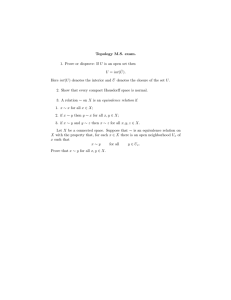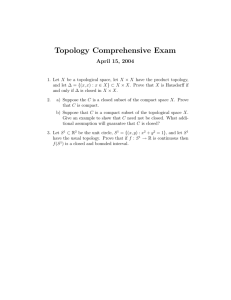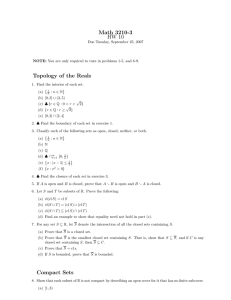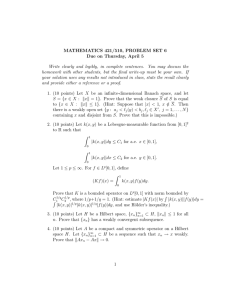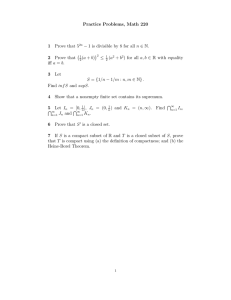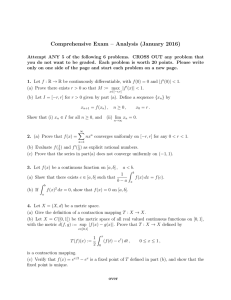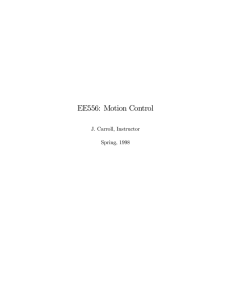Math 417 Midterm 1
advertisement
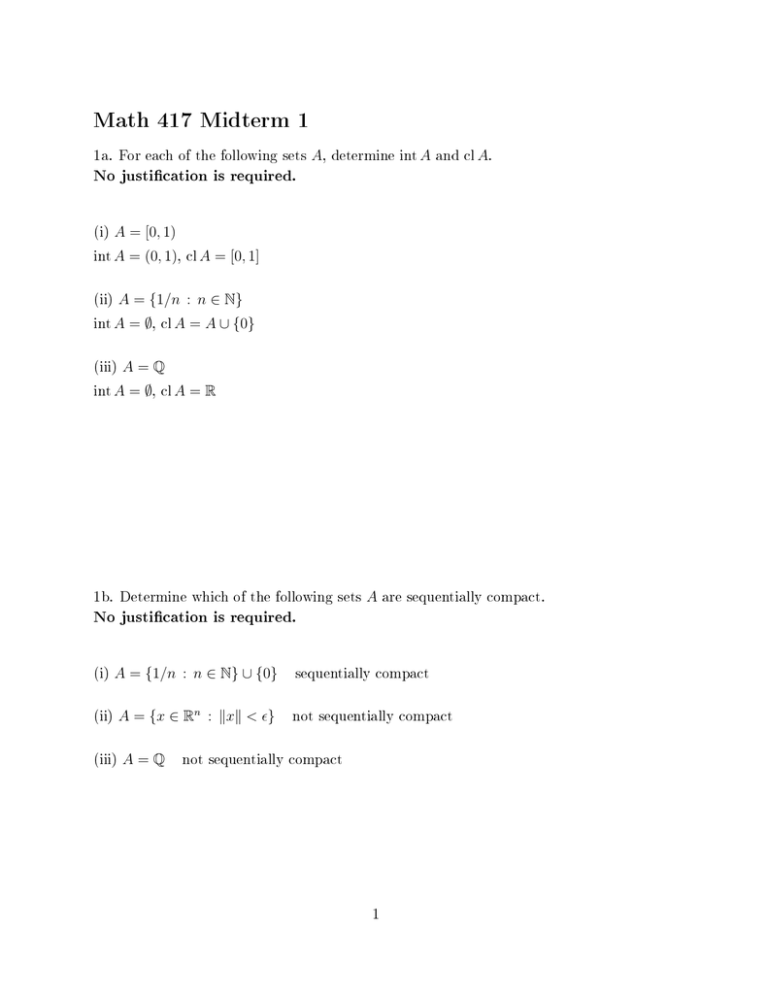
Math 417 Midterm 1
1a. For each of the following sets A, determine int A and cl A.
No justication is required.
(i) A = [0, 1)
int A = (0, 1), cl A = [0, 1]
(ii) A = {1/n : n ∈ N}
int A = ∅, cl A = A ∪ {0}
(iii) A = Q
int A = ∅, cl A = R
1b. Determine which of the following sets A are sequentially compact.
No justication is required.
(i) A = {1/n : n ∈ N} ∪ {0}
sequentially compact
(ii) A = {x ∈ Rn : kxk < }
not sequentially compact
(iii) A = Q
not sequentially compact
1
2. Prove that A = {(x1 , . . . , xn ) ∈ Rn : xn > 0} is open in Rn .
Solution.
Let u = (u1 , . . . , un ) ∈ A and take = un . If y = (y1 , . . . , yn ) ∈ B (u), then
yn = un + (yn − un ) ≥ un − |yn − un | ≥ un − ky − uk > un − un = 0,
which shows y ∈ A. Thus, B (u) ⊂ A.
2
3. Dene f : Rn \ {0} → R by f (x) = 1/kxk. Using the sequential denition of
uniform continuity, prove f is not uniformly continuous.
Take uk = ( k1 , 0, . . . , 0) and vk = 2uk . Then {kuk − vk k} = { k1 } → 0 but
{kf (uk ) − f (vk )k} = { k2 } 6→ 0.
Solution.
3
4. Using the -δ denition of limits, prove that
lim
(x,y)→(0,0)
Solution.
x2 y
= 0.
x2 + y 2
Let > 0 and pick δ = . For 0 < k(x, y) − (0, 0)k < δ , we have
2
xy
x2 + y 2 − 0 ≤ |y| ≤ k(x, y)k = k(x, y) − (0, 0)k < .
4
5. Let f : Rn → Rm be Lipschitz continuous: there is K > 0 such that kf (x) − f (y)k ≤
Kkx − yk for all x, y ∈ Rn . Let A ⊂ Rn be (nonempty and) bounded. Must f (A) be
bounded? If so, prove it; otherwise, provide a counterexample.
Note that A ⊂ Br (u) for some r > 0 and u ∈ A. (Why?) If x ∈ A, then
kf (x) − f (u)k ≤ Kkx − uk < Kr. Thus, f (A) ⊂ BKr (f (u)), so f (A) is bounded.
Solution.
(See HW 11.2 #3.)
5
